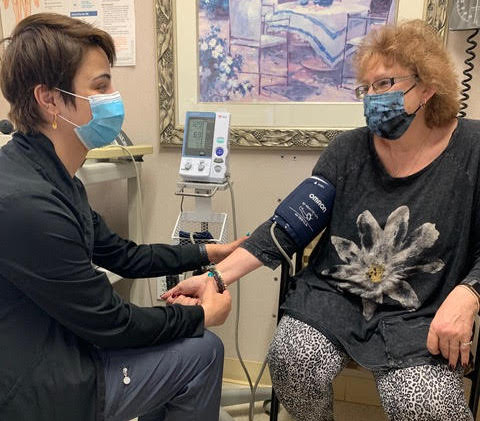Adrenal Gland Disorders
Adrenal Gland Disorders

The adrenal glands are found just above the kidneys and produce important stress hormones that regulate our “flight or fight” response and produce sex hormones that contribute to the reproductive system and hair growth. Endocrinologists (hormone specialists) are most familiar with the disorders associated with either too much or too little of these hormones – each of which can be life-threatening.
Although conditions affecting the adrenal glands are considered uncommon, listening to patients’ presenting symptoms of fatigue, generalized weakness, headaches, heart palpitations, tremors, unexpected weight changes, numbness, mood swings, menstrual irregularities, unwanted hair growth, bone fractures as well as bowel changes, along with their clinical test results, directs the clinician to further evaluate each patient’s condition. This evaluation can ultimately save or improve their quality of life.
Among adrenal gland disorders is Conn’s Syndrome or primary hyperaldosteronism (overproduction of the salt-retaining hormone, aldosterone, from a tumor), which is reported in as many as 20% of patients with high blood pressure. Less commonly seen conditions are adrenal insufficiency and Cushing’s syndrome (under- and overproduction of cortisol, respectively). The specific signs and symptoms for these diseases can direct us to specialized blood or urine tests and/or diagnostic imaging. Pheochromocytoma is a rare adrenal tumor that overproduces adrenaline and noradrenaline. It can occasionally be malignant (cancerous); therefore, its accurate and expedient diagnosis is important and can lead to a successful treatment and full recovery. Genetic conditions such as congenital adrenal hyperplasia (CAH) can present early or later in life where excess androgen is produced due to an enzyme deficiency. CAH can be acutely life-threatening in an infant or insidiously presenting in a young woman with excessive hair growth.
The first line of recommendation consists of lifestyle modifications such as healthy eating leading to weight loss, increased physical activity, and smoking cessation. If unable to achieve the established goals, then adding medications with favorable efficacy vs. side effect risk for the specific problem (high LDL-cholesterol, high triglycerides or both) should be considered. Statins (HMG-CoA reductase inhibitors) have become mainstay medications since they are not only effective at lowering “bad” cholesterol but also have been shown in numerous studies to lead to a reduction in cardiovascular events (heart attacks, stroke) in a wide range of populations. Some patients cannot tolerate statins but there are a number of additional FDA-approved therapeutic options to get to the target. Results of multiple clinical trials support the use of or the addition to statins of ezetimibe, PCSK9 (proprotein convertase subtilisin/kexin type 9) inhibitors, colesevelam (bile acid sequestrant), bempedoic acid (adenosine triphosphate citrate lyase inhibitor), fenofibrates, niacin/nicotinic acid, and prescription grade omega-3 fatty acid. These medications can be recommended alone or in combination once a patient’s risk for cardiovascular disease events is established. Options for any therapeutics in light of their expected benefits vs. potential risks are then always discussed with the patient.
Without expert knowledge of these endocrine disorders it could be difficult to suspect, screen, and potentially treat the medical conditions and ultimately save or improve quality of life. At GDE, our endocrinologists follow the current guidelines from professional societies, such as American Association of Clinical Endocrinologists and Endocrine Society.
